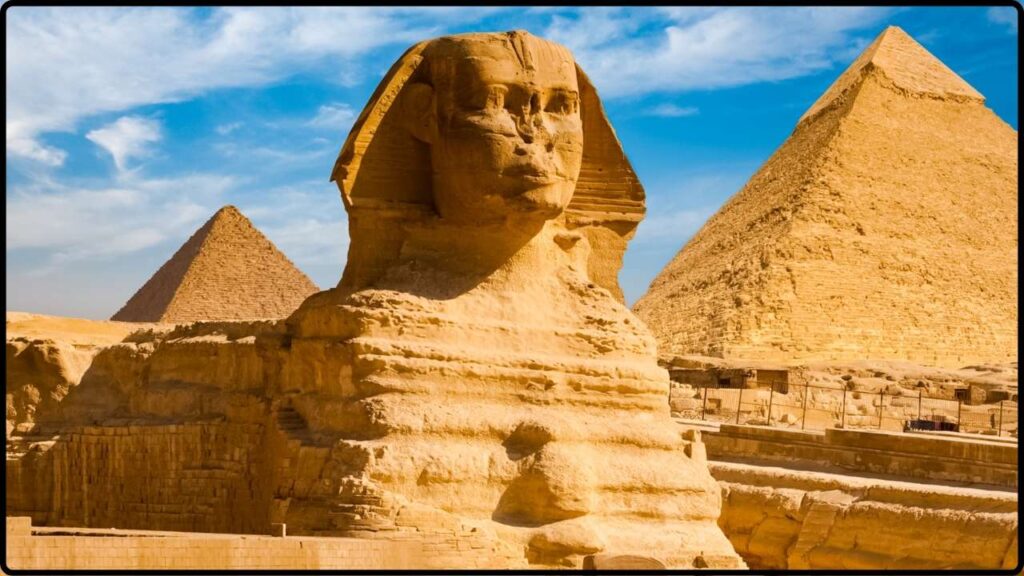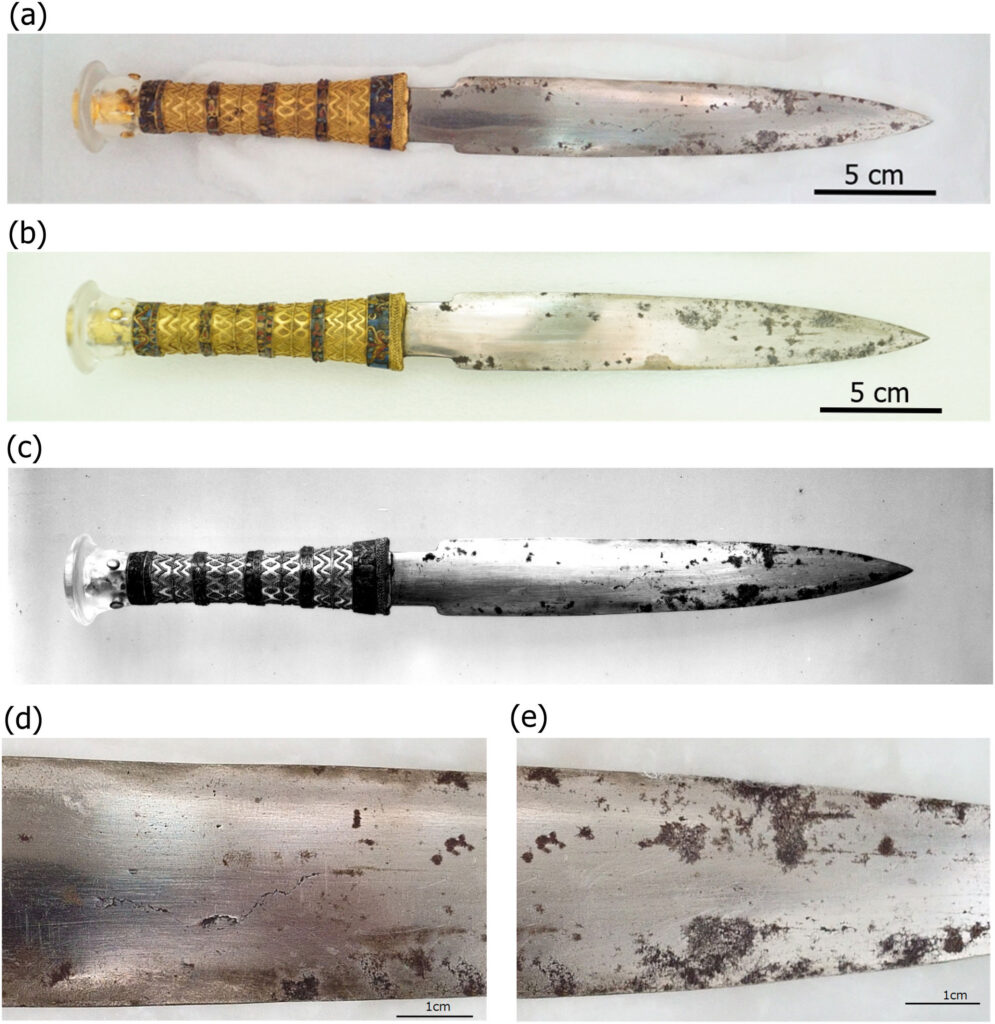Metal of the Gods: In ancient Egypt, long before the Iron Age arrived, a rare, shiny metal fell from the sky—literally. This wasn’t ordinary metal dug up from the earth. It came in fiery streaks, crashing down from outer space, gifted by the heavens. Known as meteoric iron, this celestial metal was so special that the Egyptians treated it as more valuable than gold. This article explores why meteoric iron was so sacred, how ancient Egyptians used it, and what this fascinating material tells us about human innovation, spiritual thinking, and even modern science. We’ll dig into verified archaeological finds, historical texts, scientific studies, and practical modern lessons.
Metal of the Gods
The story of meteoric iron in ancient Egypt is one of awe, science, and spirituality. Thousands of years before the Iron Age, Egyptians were working with space metal, embedding it in their myths, rituals, and royal burials. It wasn’t just a material—it was a message from the universe. And they listened. Today, we’re still learning from it. In labs, museums, and even jewelry shops, meteoric iron continues to tell the story of how humans have always looked to the stars—and sometimes, found treasure falling from them.

| Topic | Data & Insight | Official Source |
|---|---|---|
| Meteoric Iron in Ancient Egypt | Beads from Gerzeh (circa 3200 BCE) are the oldest known iron artifacts, confirmed to be meteoritic | LACMA |
| Tutankhamun’s Dagger | Blade contains 11% nickel and 0.6% cobalt—hallmarks of meteoric iron | Journal of Archaeological Science |
| “Metal of Heaven” in Texts | Ancient Pyramid texts refer to iron as a celestial gift | JSTOR |
| Modern Scientific Significance | Meteorites help scientists study early solar system formation | NASA |
| Collection and Study Today | Meteorites legally collected are studied in labs and sold for thousands | Meteoritical Society |
What Is Meteoric Iron?
Meteoric iron is iron that comes from meteorites—space rocks that survive their journey through Earth’s atmosphere and land on the surface. Unlike iron extracted from the Earth, which must be mined and smelted at high temperatures, meteoric iron comes naturally alloyed with nickel and other elements like cobalt. These materials often cool in space over millions of years, forming distinctive crystalline patterns known as Widmanstätten structures.
You can think of it this way: while regular iron is industrial, meteoric iron is cosmic—an ancient artifact delivered straight from space, already forged by celestial processes.
Because Earth’s iron is typically buried deep and rarely mixed with nickel, these sky-born metals stand out to anyone trained to recognize them.
How Ancient Egyptians Identified Meteoric Iron?
Even without advanced technology, the Egyptians noticed meteoric iron had some special traits:
- Unusual shine and color: Unlike copper or gold, it was silvery-gray and reflective.
- Magnetic properties: Many meteoric iron samples respond to magnets—something ancient people may have observed with naturally magnetized stones.
- Durability: Meteoric iron resisted corrosion better than early copper tools.
- Association with the sky: Meteorites often create dramatic fireballs and loud explosions when entering the atmosphere—clear evidence to ancient observers that they came from the heavens.
They connected the dots quickly and gave it a name in hieroglyphics: “ba-en-pet”, meaning metal of heaven.
Tutankhamun’s Celestial Dagger
One of the most famous artifacts made from meteoric iron is the dagger buried with King Tutankhamun, the boy pharaoh who ruled around 1332–1323 BCE. Discovered in his tomb in 1922, the dagger’s unusual luster and resilience raised suspicions about its origin for decades.
In 2016, researchers using X-ray fluorescence spectroscopy confirmed that the blade was made of meteoric iron. It contains approximately 11% nickel and 0.6% cobalt—levels far above what’s found in smelted iron from Earth, but consistent with meteorites.
This wasn’t just a showpiece. For the Egyptians, it had deep spiritual meaning. Carrying a dagger made from the heavens likely symbolized divine power, protection, and a direct link to the gods.

The Gerzeh Beads: The Oldest Iron Artifacts on Earth
The earliest known use of meteoric iron in Egypt comes from a cemetery site at Gerzeh, dating back to around 3200 BCE—over 5,000 years ago. Archaeologists discovered nine tubular beads made of iron that had been hammered into shape and then strung together like jewelry.
Analysis showed the beads contained up to 12% nickel, confirming they were made from meteoric iron. These were not crude objects; they were carefully formed, possibly cold-hammered, a difficult process without modern tools.
This is the earliest direct evidence of iron use by any human civilization, beating out later Iron Age developments by nearly two millennia.
Why It Was More Valuable Than Gold?
In ancient Egypt, gold was already associated with the gods—it was considered “the flesh of the gods.” But meteoric iron was even more revered because it was seen as coming from the sky.
Gold was mined, meteoric iron fell from the heavens.
It was incredibly rare, hard to work with, and impossible to reproduce. Only the elite—pharaohs, priests, and maybe high-ranking artisans—had access to it. This made it a luxury beyond luxury, almost sacred in status.
It was used sparingly, in ceremonial daggers, ritual tools, and burial goods. No swords, no farm tools—just high-symbolism items.

Meteoric Iron in Egyptian Cosmology and Myth
Egyptian texts describe the bones of gods being made of iron. In the Pyramid Texts, among the oldest religious writings in the world, kings are described as ascending to the heavens to live among the stars and the iron-boned gods.
The sky itself, in Egyptian cosmology, was a divine space full of power and danger. A metal that came from there wasn’t just rare—it was alive with spiritual energy.
This belief wasn’t exclusive to Egypt either. Other cultures—such as the Sumerians, Native Americans, and the Inuit of Greenland—also revered meteoric iron as a spiritual material.
How to Identify Metal of the Gods: A Step-by-Step Guide
Whether you’re a budding collector or just want to spot the real deal, here are the steps experts use:
Step 1: Look for High Nickel Content
Meteoric iron contains more than 5% nickel. Most Earth-based iron doesn’t have this.
Step 2: Check for Widmanstätten Patterns
These unique crystal lines appear when the iron is polished and exposed to acid. They’re only formed in the vacuum of space.
Step 3: Test Magnetism
Most iron meteorites are magnetic—more so than common Earth stones.
Step 4: Use a Professional Analyzer
Tools like X-ray fluorescence (XRF) or mass spectrometry can give exact element breakdowns.
Step 5: Trace Provenance
Authentic meteoric iron often comes with documentation from scientific collections or certified dealers.

Practical Lessons from Ancient Innovation
Innovation Without Technology
Ancient Egyptians didn’t have furnaces or high-heat smelting, but they still found a way to use iron by cold-hammering meteorites. It’s a powerful example of using what’s available and working creatively within limitations.
Rarity Creates Story
Meteoric iron wasn’t just useful—it was storied. By telling tales of sky-metal and divine gifts, the Egyptians added mythic value to the material. That’s the same principle behind successful marketing and brand storytelling today.
Fusion of Science and Belief
The Egyptians didn’t separate science and religion the way we often do. For them, the observable event of a meteor crashing was evidence of divine intent. This is a reminder that narrative frameworks shape how people interpret data, even now.
The Role of Meteoric Iron in Modern Science
Today, meteoric iron plays a key role in planetary science. Because it’s unchanged since the early solar system, it serves as a natural “time capsule.” NASA and other research agencies use it to understand:
- The formation of planetary cores
- Early solar system composition
- Asteroid structure and impact mechanics
It’s also a favorite in museum collections, from the Smithsonian to the British Museum. Some meteorites are sold legally at auction, fetching tens of thousands of dollars.
Stunning 2025 Meteor Showers Are Coming—These Locations Offer the Best Seats in the Sky
Not Gold, Not Copper—Egyptians Used Iron From Space in Sacred Objects, New Study Reveals
This Discovery Changes Everything—Scientists Find Cobalt Can Be Harvested from Urine











